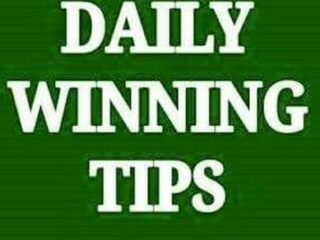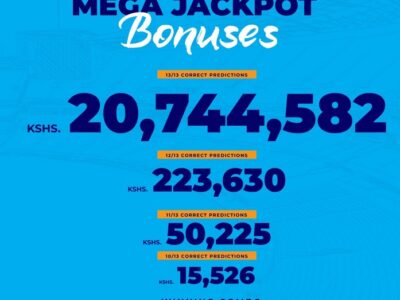As decentralized finance (DeFi) grows and digital assets proliferate, the ability to seamlessly exchange one cryptocurrency for another—token swaps—has become a cornerstone of modern blockchain ecosystems. Whether you’re a casual investor or an active trader, token swaps empower users to move capital efficiently, reduce friction in portfolio rebalancing, and engage in real-time arbitrage.
Token swaps are now part of both everyday decentralized applications (dApps) and high-frequency trading operations. According to DappRadar, decentralized exchanges like Uniswap and PancakeSwap alone processed over $1 trillion in token swaps in 2023. The sheer volume underscores the importance of understanding how token swaps work, where they’re used, and how to optimize them for both savings and profits.
This article will break down the mechanisms behind token swaps, use cases, tools, risks, and benefits—while also showing how traders use platforms like netherexpro to automate and optimize their swap strategies in volatile markets.
What Is a Token Swap?
A token swap is the process of exchanging one cryptocurrency token for another. This can happen for several reasons: strategic reallocation, accessing new protocols, hedging risk, or even transitioning tokens after a blockchain migration.
Token swaps can occur through:
- Centralized exchanges (CEXs) like Binance and Coinbase
- Decentralized exchanges (DEXs) like Uniswap, PancakeSwap, and Curve
- Token migration events during a protocol upgrade (e.g., swapping LEND for AAVE)
How Token Swaps Work
On Centralized Exchanges (CEXs)
Users trade through order books, matching bids and asks. Token swaps here require account registration, KYC, and custodial trust.
Pros:
- High liquidity
- User-friendly
- Fast execution
Cons:
- Counterparty risk
- Lack of anonymity
- Limited token availability
On Decentralized Exchanges (DEXs)
DEXs use Automated Market Makers (AMMs). Rather than matching buyers with sellers, users trade against liquidity pools using smart contracts.
Pros:
- Permissionless
- Non-custodial
- Wide token support
Cons:
- Potential slippage
- Higher gas fees during congestion
- Lower liquidity for small-cap tokens
Use Cases for Token Swaps
Portfolio Rebalancing
Traders and investors regularly use token swaps to adjust portfolio weights between stablecoins, DeFi tokens, or governance tokens based on market conditions.
Arbitrage Opportunities
Traders exploit price discrepancies between exchanges. Swapping tokens on one platform and reselling them on another can yield risk-managed profits—especially when managed using tools like netherexpro, which offers automated, real-time trading solutions.
Accessing Protocols
Swapping ETH for a platform-specific token (like AAVE or SUSHI) allows users to participate in staking, voting, or governance.
Token Upgrades or Migrations
When projects transition to a new blockchain or standard (e.g., ERC-20 to native token), token swaps ensure holders receive the updated asset.
Real-World Examples and Case Studies
Uniswap Token Swap Activity
In 2021, Uniswap processed over $58 billion in monthly volume, primarily from users swapping tokens directly from their wallets using Metamask or other Web3 tools.
AAVE Migration from LEND
The AAVE protocol required LEND token holders to perform a 100:1 token swap during its rebranding and protocol launch. The process was executed via smart contract, ensuring transparency and fairness.
Pros and Cons of Token Swaps
Pros:
- Fast and easy asset conversion
- Enables DeFi participation
- No need for intermediaries (on DEXs)
- Non-custodial control (on-chain swaps)
Cons:
- Gas fees can be high (especially on Ethereum)
- Slippage may impact trade value
- New users may struggle with smart contract interfaces
- Risk of scams with fake token contracts
Risk Management Tips for Token Swaps
- Double-check contract addresses before swapping unfamiliar tokens.
- Use reputable platforms and avoid random Telegram or Twitter links.
- Consider Layer 2 solutions like Arbitrum or Optimism to reduce fees.
- Use limit orders or slippage control settings when available.
- Monitor trading volume and price trends using platforms like netherexpro to time your swaps efficiently.
Frequently Asked Questions (FAQ)
What is a token swap in crypto?
It’s the process of exchanging one cryptocurrency for another, either through a centralized or decentralized platform.
Are token swaps taxable?
Yes. In many jurisdictions, swapping one token for another is considered a taxable event, as it constitutes a disposition of assets.
Do I need ETH to do a token swap on Ethereum?
Yes. You’ll need ETH to pay for gas fees. On other chains, you’ll need the native coin (e.g., BNB for Binance Smart Chain).
How do I perform a token swap on a DEX?
Connect your wallet to a DEX (e.g., Uniswap), select the tokens to trade, approve the transaction, and confirm the swap via your wallet.
Are token swaps instant?
Most swaps are executed within seconds or minutes, depending on network congestion and confirmation speed.
What is slippage in token swaps?
Slippage is the difference between the expected price and the actual execution price of a swap, typically due to volatility or low liquidity.
Can I reverse a token swap?
No. Once confirmed on the blockchain, swaps are irreversible. Always check token details carefully before swapping.
What happens during a token migration swap?
You exchange your old token for a new one during a protocol upgrade or rebrand, usually through a smart contract or project portal.
Are there fees for token swaps?
Yes. On DEXs, you pay network gas fees and sometimes protocol fees. On CEXs, trading fees apply per transaction.
Can I automate token swaps?
Yes. Advanced platforms like netherexpro offer automation tools that can execute swap strategies based on market conditions, limit thresholds, and portfolio triggers.
Conclusion
Token swaps have become an essential mechanism in today’s crypto economy, enabling seamless access to new opportunities across trading, DeFi, gaming, and governance. With a single click, users can transition between assets, rebalance portfolios, or engage in lucrative yield farming strategies. However, with great power comes great responsibility—understanding the mechanics, risks, and best practices behind token swaps is critical to protecting your capital and maximizing gains.
As blockchain networks grow more interoperable and user-friendly, the ability to swap tokens efficiently, securely, and cost-effectively will be a defining skill for both retail investors and professional traders. Tools like netherexpro are helping bridge that gap, offering analytics, automation, and precision for those ready to level up their trading strategy in a decentralized world.
In short, token swaps are not just a function—they’re a gateway to financial flexibility in the crypto universe.













